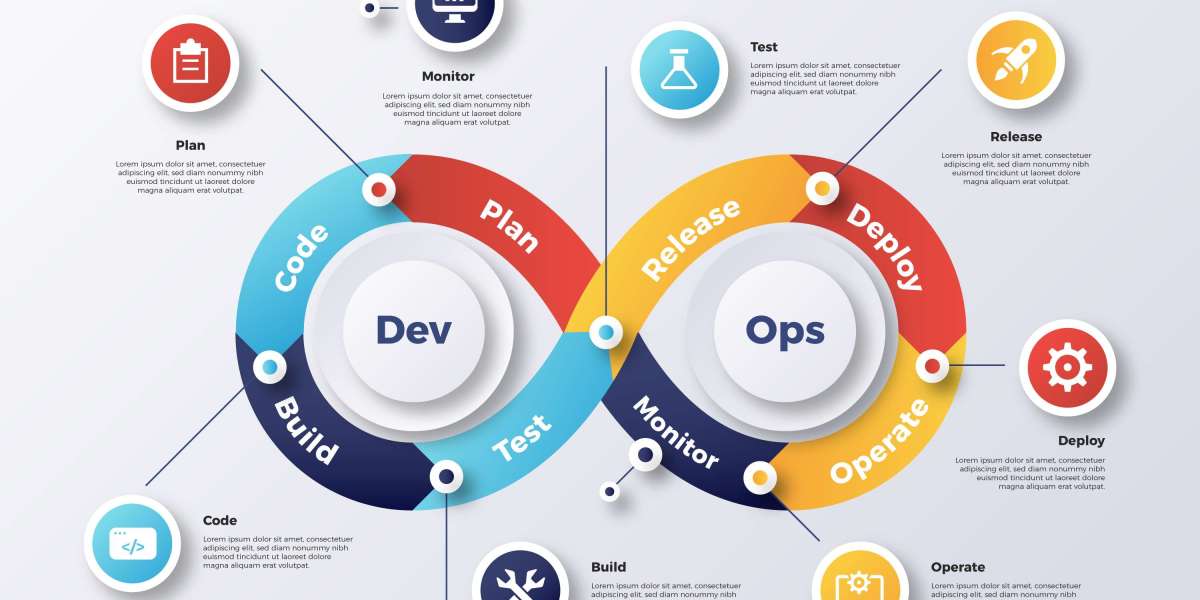In today’s fast-paced digital landscape, DevOps in the cloud has emerged as a game-changer for businesses aiming for scalability, cost-efficiency, and rapid software delivery. Cloud-based DevOps practices enable organizations to streamline workflows, enhance collaboration, and optimize resources while ensuring high-quality software deployment. This article explores how DevOps in the cloud is transforming modern software development and why businesses must adopt it to stay competitive.
Why DevOps in the Cloud?
1. Scalability and Flexibility
Cloud computing allows businesses to scale resources dynamically. Unlike traditional on-premise infrastructure, cloud-based DevOps Consulting Services ensures that companies can allocate computing power on demand. This elasticity is crucial for businesses experiencing fluctuating workloads, helping them scale up during peak demand and scale down when resources are not needed, ultimately optimizing operational costs.
2. Cost-Effectiveness
Organizations leveraging cloud-based DevOps benefit from a pay-as-you-go model, eliminating the need for heavy upfront investments in infrastructure. By utilizing cloud providers like AWS, Microsoft Azure, and Google Cloud, businesses can save money on hardware, maintenance, and upgrades. Additionally, automation in DevOps reduces manual intervention, further cutting down operational expenses.
3. Enhanced Collaboration and Efficiency
With cloud-native DevOps, teams can work seamlessly across geographies. Cloud platforms provide centralized repositories, CI/CD pipelines, and collaborative tools like GitHub, GitLab, and Jenkins, ensuring that development, operations, and security teams stay aligned. Real-time collaboration eliminates bottlenecks, speeds up development cycles, and enhances software quality.
Key Components of DevOps in the Cloud
1. Continuous Integration and Continuous Deployment (CI/CD)
CI/CD pipelines are the backbone of cloud DevOps, enabling developers to integrate code changes frequently and deploy them automatically. Cloud-native CI/CD tools, such as AWS CodePipeline, Azure DevOps, and Google Cloud Build, help teams accelerate software releases with minimal manual intervention.
2. Infrastructure as Code (IaC)
Infrastructure as Code automates the provisioning and management of cloud resources using declarative scripts. Tools like Terraform, AWS CloudFormation, and Ansible allow developers to define infrastructure configurations, ensuring consistency, reducing human errors, and enabling repeatable deployments.
3. Automated Testing and Monitoring
Automated testing frameworks, including Selenium, JUnit, and TestNG, ensure that applications are rigorously tested before deployment. Additionally, cloud-based monitoring tools like Prometheus, Grafana, and AWS CloudWatch provide real-time insights into system performance, helping teams proactively detect and fix issues.
4. Security and Compliance
Security is a major concern in DevOps cloud environments. Cloud-native security tools such as AWS Shield, Azure Security Center, and Google Chronicle offer robust protection against cyber threats. Furthermore, compliance frameworks like ISO 27001, GDPR, and HIPAA ensure that applications meet industry regulations and data protection standards.
Benefits of Cloud-Native DevOps
1. Faster Time to Market
By automating deployments, testing, and monitoring, DevOps in the cloud accelerates software delivery cycles. Businesses can rapidly introduce new features, fix bugs, and respond to market demands, gaining a competitive edge.
2. Improved Reliability and Performance
Cloud providers offer high availability, disaster recovery, and backup solutions, ensuring 99.99% uptime. With multi-region deployment options, businesses can improve fault tolerance and ensure uninterrupted services for end-users.
3. Increased Developer Productivity
By leveraging microservices architecture and containerization (Docker, Kubernetes), developers can work on independent modules without disrupting the entire application. This modular approach enhances development speed and maintains application stability.
4. DevSecOps for Enhanced Security
Integrating security into the DevOps pipeline (DevSecOps) ensures that vulnerabilities are detected early in the development cycle. Automated security testing, threat intelligence, and continuous compliance checks reduce the risk of security breaches.
Best Practices for Implementing DevOps in the Cloud
1. Choose the Right Cloud Provider
Selecting the right cloud platform (AWS, Azure, Google Cloud) based on scalability, security, and cost is crucial for successful DevOps adoption.
2. Automate Everything
Automation should be applied to infrastructure provisioning, code deployments, security testing, and monitoring to enhance efficiency and reduce manual errors.
3. Adopt Microservices and Containers
Breaking applications into microservices and using Docker and Kubernetes ensures better scalability, maintainability, and faster deployments.
4. Monitor and Optimize Performance
Continuous monitoring and real-time analytics with AI-driven tools like New Relic, Datadog, and Splunk help optimize resource utilization and application performance.
5. Foster a DevOps Culture
Encouraging collaboration between development, operations, and security teams fosters a culture of innovation, agility, and continuous improvement.
Conclusion
DevOps in the cloud is the future of scalable and cost-effective software development. By leveraging cloud-native DevOps tools, organizations can accelerate software delivery, enhance security, and reduce costs. As businesses continue to embrace digital transformation, integrating DevOps with cloud computing will be a strategic move for sustained growth and innovation.



